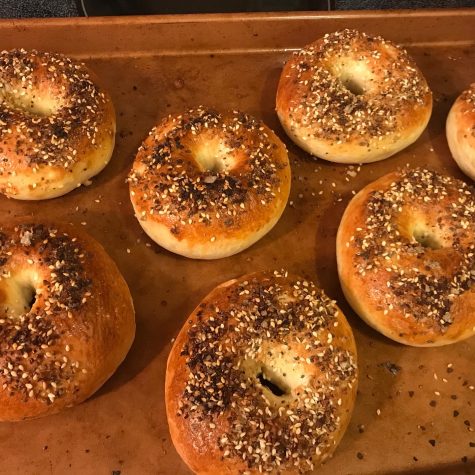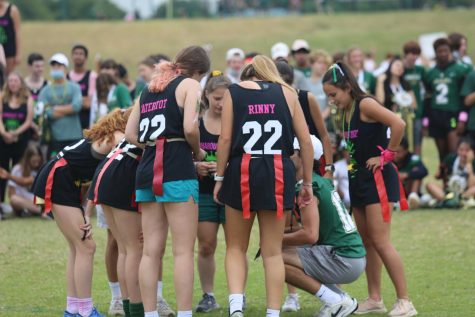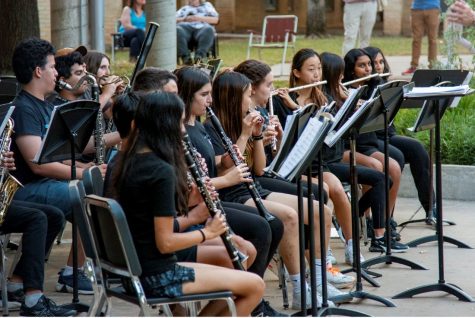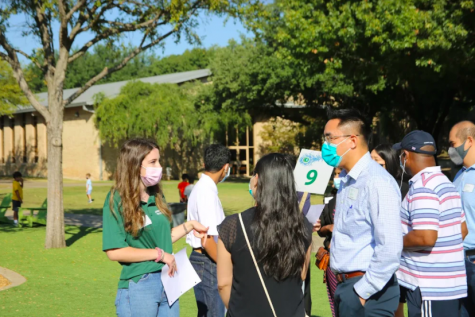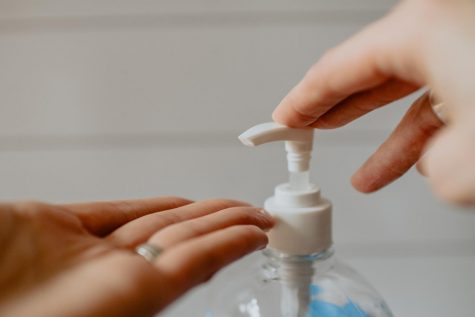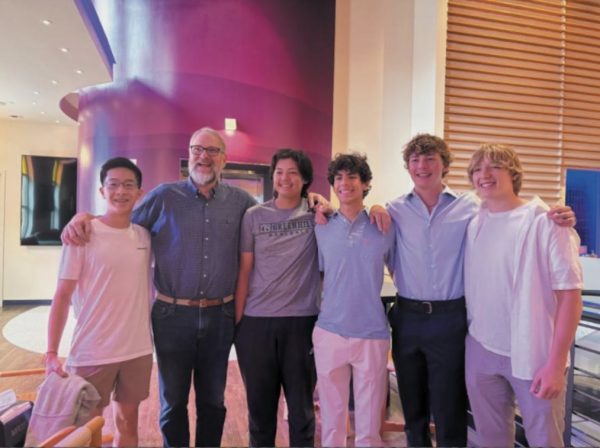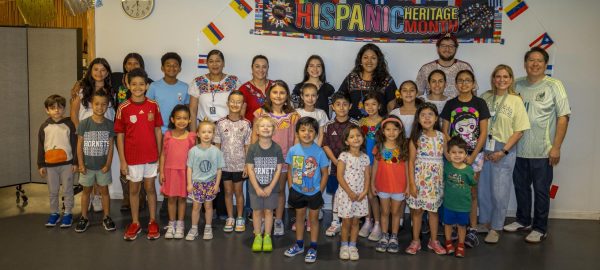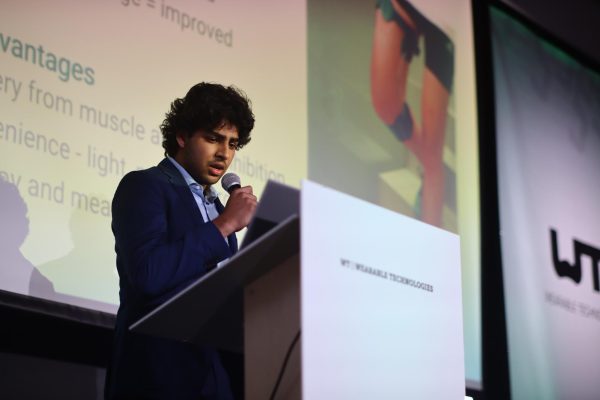Greenhill Students and Faculty Cope with Quarantine
Giorgio birdwatching with his daughter from home.
Despite not leaving her house except for evening walks and being unable to meet up with friends, sophomore Prisha Gupta does not feel alone.
Along with her parents and brother keeping her company, social media has provided her comfort in knowing there are countless others going through the same thing as her.
“Just seeing people talk about quarantine kind of makes you feel less alone because you know that there are people out there,” Gupta said.
As the Covid-19 pandemic sweeps the nation, most states and counties have issued stay-at-home orders to their residents in an attempt to slow the spread of the virus. This has resulted in the closure of school campuses, including Greenhill School, which has transitioned to online learning from home since mid-March.
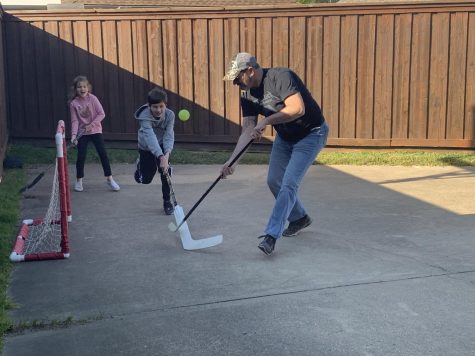
Some states, Texas included, are reopening some businesses and attempting to resume a semblance of normal life. But social distancing recommendations are likely to remain in place for months, if not longer.
Gupta, as well as many other students and faculty members, have adapted to life in isolation. Most are leaving home only to go to the pharmacy or purchase groceries, in addition to neighborhood walks or bike rides.
“I have asked my family to adhere to strict self-isolation and social distancing guidelines,” Upper School history teacher Matthew Giorgio said. “While we are thankfully all healthy and safe, the risk of infection is invisible and all around us.”
One of the many effects of implementing stay-at-home orders and social distancing is the resulting lack of in-person social interaction outside of one’s own household. In response, many students and faculty are finding ways to connect with others virtually. Zoom and FaceTime video calls have been popular methods of engaging in social interaction.
“I have weekly Zoom craft nights with some of my friends where we will all hang out, each doing our own craft, and talk,” Upper School Modern and Classical Languages Chair Laura Hudec said.
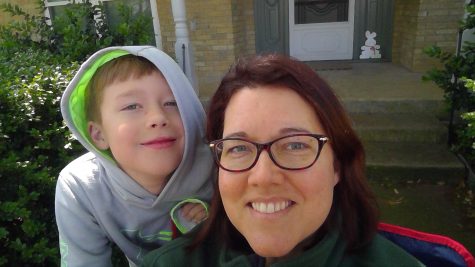
However, while talk and texts do help fill the gap that stay-at-home orders have created, many still feel that their need for interaction has not been satisfied. This especially applies to naturally extroverted people.
“I thrive on social contact and interactions,” Upper School English teacher Andrew Mercurio said. “Generating and receiving positive energy from other people in a physical space propels me through each day and provides greater purpose and joy. Without that, I am really struggling to create the same kind of energy on a daily basis.”
Coming from an environment where students and faculty are in constant contact for seven hours a day or more, there is a stark contrast between that situation in comparison to now, where social interaction must happen strictly from afar.
The mental toll that social isolation has taken and will continue to take on members of the community could be significant, experts suggest.
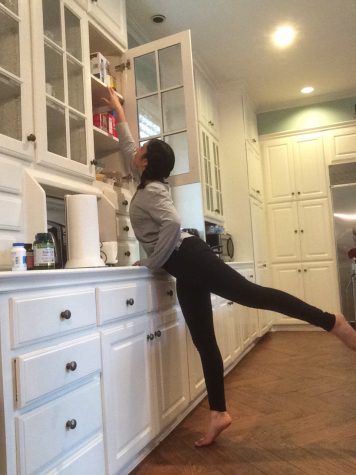
Part of what makes the concept of social distancing so detrimental to people’s mental health is that it goes against the human instinct to find comfort through others in larger groups, according to a recent NBC News report. The Covid-19 pandemic is causing a lot of fear globally, and the inability to seek consolation in the company of others makes it harder for many to work through that fear.
“Being away from people for so long has led me to draw more into seclusion than normal, and that has been a negative effect on my mental health as well,” sophomore Rachel Wegener said. “It is definitely easier to fall into bad habits during self-isolation.”
In the face of all the negativity, some have found the silver lining to staying at home.
“I am getting more sleep at night and can set my work schedule a little bit more around what works for me,” Upper School Math Department Chair Melissa Battis said. “I appreciate the slower pace and really hope that we can find ways to maintain some of that slower pace when we return, instead of jumping full into a rushed feeling of needing to complete everything.”
Many students and teachers have also been able to try new things and revisit old hobbies that they could not fit into their schedule before the shift to online learning.
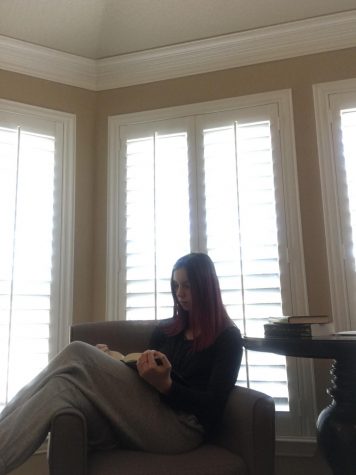
“I get to practice a lot more of my hobbies now, especially drawing,” Gupta said. “When we were in school, I hadn’t gotten the chance to draw for myself for a long time, but once spring break started, there were a couple of days where I would just draw for hours, and I’m glad I get to do that again.”
Social distancing has also provided a time for people to be alone with their thoughts and observe the world around them.
“The loss of so many important aspects of our lives has created a greater sense of appreciation for those things, especially Greenhill,” Mercurio said. “I typically love being at school with everyone, but I don’t think I have ever wanted to be there as badly as I do now. I miss it so much it hurts.”
In one way or another, every person in the United States is being affected by the Covid-19 pandemic. Even though social contact is limited, people are able to relate and connect with each other more as a result of this shared experience.
“I also think the world’s a lot more connected and kinder now,” Gupta said. “[The pandemic is] also shedding light on a lot of things that are wrong with our country and the world, and although it might seem scary and daunting, a lot of kindness and bravery are rising up out of it. It’s comforting to know that the world will come out stronger after this.”
